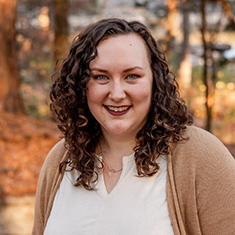After we had put together the Resilience journal, we had the opportunity to sit down with Ambassador Rick Barton, Assistant Secretary of State for Conflict and Stabilization Operations (CSO). Ambassador Barton has worked on problems of fragility, vulnerability, and instability in some 30 countries, and he has done so in various sectors of the development community: as Co-Director of the Post-Conflict Reconstruction Project at the Center for Strategic and International Studies, Deputy High Commissioner of the United Nations Refugee Agency, and founding director of the U.S. Agency for International Development’s Office of Transition Initiatives. He also taught for five years at Princeton’s Woodrow Wilson School. Below, we present brief excerpts of a wide-ranging discussion in which Ambassador Barton shared some of his personal reflections on the notion of resilience.
How important is resilience in the world of relief and development?
Human resiliency is uplifting. Inspiring. When people have lost everything else, somehow resilience remains. It is quite powerful, and it is the core building block that we have to seize upon in societies where people have gotten to the rawest moment of humanity, where people contemplate killing each other. It is the germ of hope, the opening for a better tomorrow, and that’s fundamentally what our work is about.
How do you work with the resilience you find in vulnerable places?
The places where we work are usually in a very bad spot. We have to identify something to build upon, to grow, to advance change. Human resilience is the start, but by itself it is not enough. CSO looks for the best available opportunity, and how that opportunity helps connect U.S. policy to on-the-ground practice. Policy that is not grounded in practice is only a nice idea. It’s an editorial. We are not editorial writers here in the U.S. Government—we are here to make something happen. Identifying community resilience is a key to finding the program opportunity that might be catalytic in making successful, long-term changes.
What role does resilience play at this intersection of policy and practice?
Resilience is the glue because, at the end of the day, development is all about the local people. If you don’t get the local buy-in, then you have a lifelong paternalistic relationship that dilutes local resilience. That paternalistic model is worn out. We’re trying to suggest that the long-term answer is local ownership. So we must build off of community resilience.
In practical terms, how do we do this?
There are five recommendations. It starts with a common understanding of the case. We have to look at the case as a whole. That means our analysis can’t be owned only by the humanitarians or the development people or the conflict specialists. That’s one of the things we’re trying to push. The second key, based on that holistic analysis, is to ask: What are the two or three most important things that need to happen at the front end? The third question is: Who is best suited to do the work? Is it the UN? Is it USAID? Is it the contractor community? Is it an NGO? Be open to who is best positioned and who has the appropriate resources and tools. The fourth of these five critical elements to success is: Do we have real-time measurement? I’d rather not hear after you complete your program that it was completely misdirected and that it misspent resources. I’d prefer to hear that in month three or four, when you can fix it. The final recommendation is that you have to communicate constantly with U.S. taxpayers, citizens of the country you’re working in, your allies, and your stakeholders to keep them involved and informed.
Are there negative aspects to building resilience?
Negative resilience is a huge challenge. The downsides of resilience include stubbornness and inflexibility. Hate and prejudice are resilient qualities. They have a way of staying around. Designing catalytic initiatives that encourage people to bring the forces of positive resilience together to solve a problem is critical. Reconciliation often falls in this category, but many times you just can’t get to that right away. You’ve got to go through so many other things before you can even get close to it.
What factors might prevent development professionals from incorporating resilience as a building block in their work?
There are two main reasons. One is that we often arrive at our understanding of a problem through our prior experience, our limited view, or our professional strength. For example, if I’m a physician, I’m likely to focus on health, and health is not always the number-one need. Sometimes, running away from a flood might be more important than getting a vaccination, even though getting a vaccination is also important. We need to prioritize based on the situation and not our own biases. The second main reason is that we often project qualities onto people that reflect assumptions of weakness rather than strength, which can undermine what they have to offer and overestimate our ability to bring change. A big part of what I’m talking about is modesty: it’s unbelievably ambitious to be doing this work, so let’s be modest in how we approach it.




